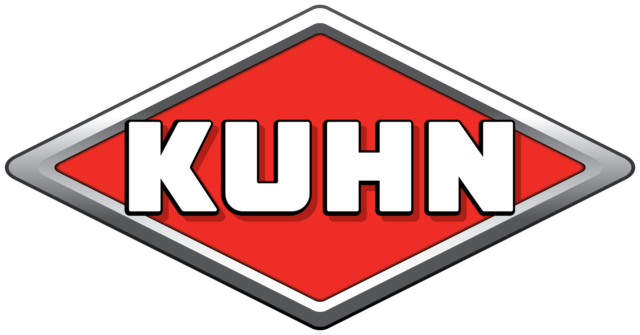“Gas and brakes.” Have you ever imagined, as you are feeding forage to your dairy cattle, that you are pressing a “gas pedal” or a “brake pedal”? Kurt Cotanch, “the lab guy” at the Miner Institute in Chazy, New York, likes to metaphorically compare the fast pool of fermentable fiber to the gas pedal, speeding up passage through the rumen, and the pool of slow and indigestible fiber as the brakes.
This fast pool is represented on your lab reports as neutral detergent fiber digestibility (NDFd – 30-hour). The undigestible neutral detergent fiber (uNDF – 240-hour) metaphorically is the “brake” (Figure 1).
 Dairymen know that forage quality drives profitability. Each year, dairy producers are challenged by weather, pests, labor and input costs to put up the best forage possible.
Dairymen know that forage quality drives profitability. Each year, dairy producers are challenged by weather, pests, labor and input costs to put up the best forage possible.
So how is the 2016 silage crop feeding? How does it compare to the 2015 crop? The figures included in this article (unless otherwise noted) are generated from lab samples on the Cumberland Valley Analytical Services website.
Wisconsin and Minnesota inputs represent the upper Midwest, and Pennsylvania and New York inputs represent the Northeast region in this comparison. These two regions varied greatly in their growing conditions this year.
Note that these summaries are taken from website information that does not differentiate the harvest year, so there is some overlap of samples from one growing year to the next. The samples were collected from the same time period each year, Sept. 1 to Dec. 20.
Significant yield differences were reported in these two regions in 2016. The Northeast experienced drier weather conditions through the summer growing season, reducing total yield. The upper Midwest received much more moisture during the same time period.
The NDF from the corn silage summaries in the Northeast ranged from 32.6 to 41.1 percent (-1 standard deviation to +1 standard deviation). Figure 2 illustrates a decreasing trend in NDF content as the plant dried down.

It is no surprise that as starch content increased in the ear, the percentage of NDF in the plant decreased.
It is interesting to note in Figure 3 showing 30-hour NDFd (as a percent of NDF), the decrease in NDFd in upper Midwest samples in the fall of 2016 as compared to the fall of 2015.
 Some nutritionists feeding herds in the upper Midwest have commented that the cows are “not milking as well as expected.” Are these observations a result of poorer fiber digestion, from a decrease in starch digestibility or another analyte?
Some nutritionists feeding herds in the upper Midwest have commented that the cows are “not milking as well as expected.” Are these observations a result of poorer fiber digestion, from a decrease in starch digestibility or another analyte?
Comparing lab summaries for starch for 2016 versus 2015, the starch in 2016 is about 3 percent greater in the sample set used for the upper Midwest region. There is virtually no difference in the seven-hour starch disappearance when comparing 2016 to 2015 (2016 is 1.4 percent less).
It stands to reason that the uNDF, the estimate of the undigested fiber for a feedstuff placed in rumen fluid for 240 hours (Figure 4), is increasing as the digestible fraction decreases.

As a plant matures, lignin increases and the indigestible or undigestible fiber increases. It is no surprise that the driest corn silage samples have the lowest digestibility and the highest uNDF (240-hour).
How does this impact milk yield? Mike Van Amburgh’s group at Cornell University and Kurt Cotanch at Miner Institute have been researching how fermentable NDF and uNDF impact dry matter intake, rumen fill, stage of lactation and other factors.
Thinking about Cotanch’s car metaphor, you can imagine how an increase in uNDF can act as a brake to reduce the rate that fiber particles pass through a cow’s rumen.
The increase in uNDF in the forage in the upper Midwest silages might take a little excitement out of milk production unless uNDF is considered when formulating diets. If the particles pass through the rumen at a slower rate, the rumen may fill up with slowly degradable particles, and dry matter intake will be reduced.
The research presented recently by Cotanch at both the Cornell Nutrition Conference and Penn State Dairy Nutrition Workshops illustrates how uNDF in forages can impact intake and milk yield.
In Table 1 data collected from the Miner Institute herd illustrates how the cows in the high pen were consuming 67 pounds of dry matter intake and producing 120 pounds of milk in October 2014.

The uNDF (240-hour) as a percent of dry matter in the forages changed from 8.5 to 12 percent of dry matter. The cows responded to this change by reducing dry matter intake from 67 to 62 pounds, and milk production decreased by 15 pounds.
What about BMR varieties? This is a whole new vehicle, like a 450-HP Raptor Ford F-150 farm pickup truck. It is still a Ford F-150 pickup, right? From the Oba and Allen meta-analysis (highly referenced in the literature), one can expect about 0.55 pounds more milk for each 1 percent increase in ration NDFd.
The effect was greater for high-producing cows that may be limited by rumen fill.
The effect was approximately 2 pounds of milk increase per percent of increased NDFd. BMR corn silage feeds differently from conventional corn hybrids because of its increased fiber digestibility. Fiber disappearance increases, uNDF accumulation decreases, and rate of passage through the rumen increases.
In Figure 5 for the upper Midwest data, on average there is an 8 to 10 percent increase in 30-hour NDFd for BMR corn silage samples compared to conventional corn silage samples.

For the same dataset, both the conventional corn silage and the BMR corn silage samples had an increase in uNDF for the fall 2016 silage as compared to fall 2015 samples. This increase in uNDF is sure to have an impact on dry matter intake and milk yield.
With a better understanding of rapidly degradable fiber and slowly degradable fiber (gas and brakes), producers can identify the features of their silages and program them to be fed to appropriate cow groups to maximize whole-farm profitability. ![]()
Ian Shivas is a nutritionist with Renaissance Nutrition. Email Ian Shivas.




